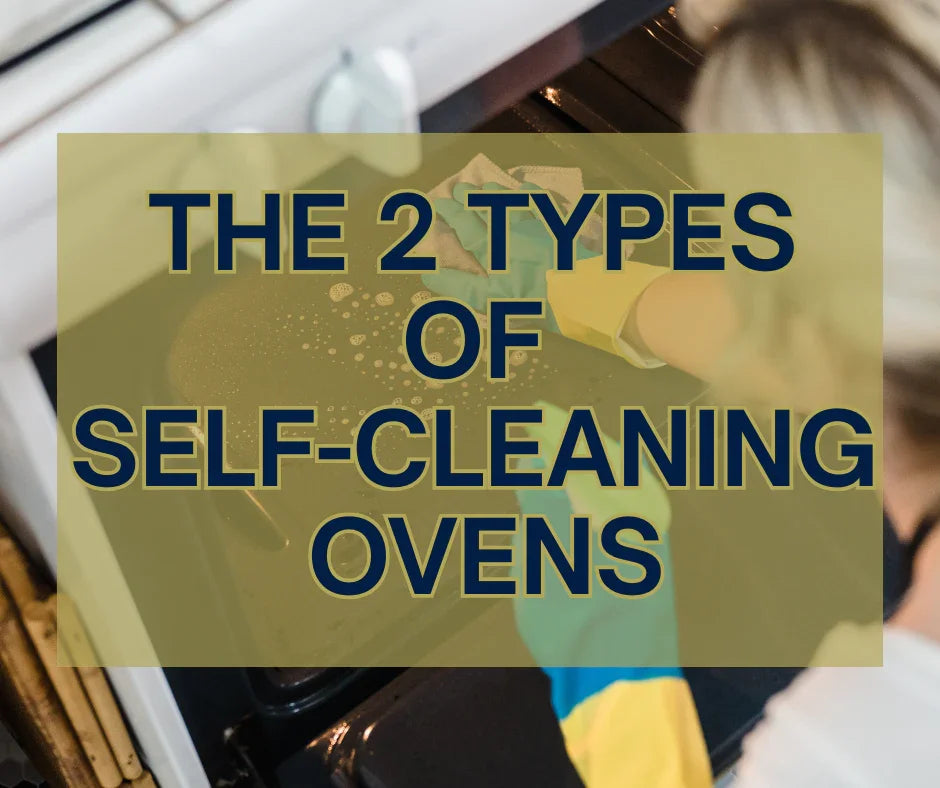Confused about Self-Cleaning Ovens? Here's 2 Types and What You Need to Know Before You Buy
If you're looking at self-cleaning ovens, you've probably heard terms like pyrolytic, catalytic liners, or enamel interiors. Sounds scary and technical, right? But don't worry - we'll break it all down for you, so you can choose the oven that's right for your home (and never dread oven cleaning again).
1. Pyrolytic Ovens: The "Set and Forget" Deep Cleaner

If you want an oven that does the heavy lifting for you, pyrolytic cleaning is the ultimate solution. Here's how it works;
Heats up to 500oC to incinerate food residue
Leaves behind a fine ash - just wipe away with a cloth or paper towel!
Features a locking door and mutiple layers of glass for safety
While pyrolytic ovens are powerful, they're designed to be used only 3-4 times a year because 500oC is VERY HOT. The cycle uses an average of 5kWh of electricity - roughly $1.60 per use, depending on your energy tarrif. (Calculated using $0.32/kWh)
✔️ Pro tip: Always read your oven's destruction instruction manual before using this feature. Some parts (like trays or runners) may need to be removed before starting a clean.
👉 Best for: Households that do lots of roasting or baking and want a truly clean oven without the scrubbing.
2. Catalytic Ovens: Low Maintenance, Every Day Clean

Catalytic liners are a low-fuss, self-cleaning solution. Depending on the particular oven, the liners may come on the back wall, sides and/or roof. These porous enamel coatings absord grease splatters and break them down during regular cooking at high heat (usually above 200oC).
Unlike pyro ovens, there's no waiting for a long cleaning cycle - just heat your oven occasionally if you don't often cook about 200oC. These ovens don't require much manual cleaning, but a quick wipe now and then keeps them in tip top shape.
✔️ Pro tip: If you don't often cook at high temps, heat your oven to 220oC for 45 minutes.
👉 Best for: Busy kitchens that want a low-maintenance oven without the need for extreme heat cleaning cycles.
3. Easy-Clean Enamel: A Modern Take on Manual Cleaning
Not all ovens are technically self-cleaning - but some make manual cleaning so easy, it hardly matters. Brands like ILVE and Smeg use multi layered, premium enamel coatings that resist sticking and allow for effortless wipe-downs while the oven is still warm. No harsh chemicals. No scrubbing. Just a quick wipe and you're done.
👉 Best for: Homes where oven mess is minimal and chemical cleaner concious families.
So, Which Self-Cleaning Oven is Right for You?
| Feature | Pyrolytic | Catalytic | Easy-Clean Enamel |
| Deep Clean | ✔️✔️✔️ | ✔️✔️ | ✔️ |
| Frequency Needed | 3-4/yr | Regular use | As needed |
| Manual Effort | Minimal | Very Low | Low |
| Energy Use | High | Low | None |
| Best For | Heavy Cooks | Everyday family use | Light mess kitchens |
When buying an oven, cleaning is just one piece of the puzzle. You'll also want to consider how you cook, what features you'll actually use, and how much maintenance you're comfortable with.
Need Help Choosing?
At Newtons Designer Appliances, we don't just sell self-cleaning ovens - we help you find the perfect fit for your lifestyle, kitchen, and budget.
📞 Call us today (07) 3397 1161
📍 Visit our showroom 445 Logan Road Stones Corner
🗣 Chat with our appliance experts - we'll answer all your questions (including the ones you didn't know you had)
Want to See These Ovens in Action?
Browse our ovens online, drop by the showroom to have a look or book into our next cooking demo. Whether it's a pyrolytic powerhouse, easy-peasy enamel or a catalytic all-rounder, we've got the right self-cleaning oven for you and your kitchen.

